Email Address enquiry@pellet-richi.com
Phone/Whatsapp 0086-13838389622
Email Address enquiry@pellet-richi.com
Phone/Whatsapp 0086-13838389622
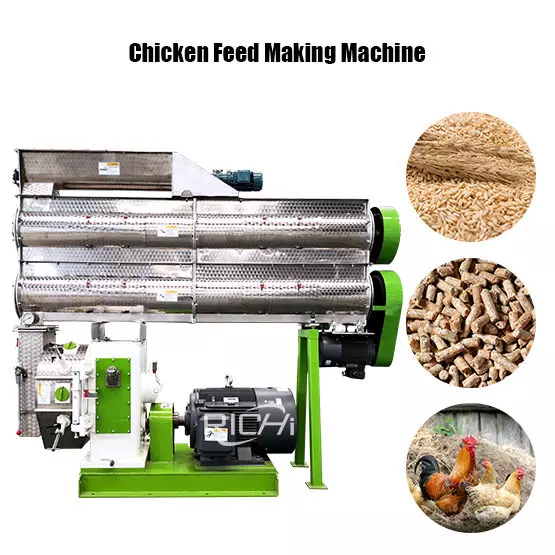
Chicken feed pellet machine is a mechanical equipment that can pelletize powdered raw materials. It is the core equipment in the chicken feed processing process. It is mainly used to produce various pellet chicken feeds and can also be used to process other types of livestock and poultry feeds. The chicken feed making machine is an ideal equipment for chicken broiler layer breeding. It is of great significance for feed maturation, increase nutrition, improve absorption, convenient storage and transportation, adapt to the chewing function of animals, and high-yield and high-efficiency chicken breeding.
The application range of chicken feed making machine is very wide, it can be used not only in chicken feed processing plants, but also in breeding farms. It can produce pellet feeds of various specifications to meet the needs of different animals. At the same time, the chicken feed pellet machine can also be adjusted and optimized according to different production needs to improve production efficiency and product quality.
Compared with traditional powdered feed, pellet feed has higher feed utilization, digestibility and production efficiency. Therefore, chicken feed pellet machines have been widely used in animal husbandry, mainly in the following aspects:
Experiments have shown that feeding pelleted feed consumes 0.094kg less material per kg of body weight gain than feeding powdered feed, and the feed conversion rate is increased by 3.1%. Judging from the current global research results, the benefits of chicken pellets made by chicken feed pelleting machine must be higher than powder. Otherwise, the standard process of pelleting will not be available in compound chicken feed factories all over the world.









With the gravity power, the centrifugal force generated by the rotation of the ring die, and the feeding scraper, the steam conditioned powder materials will be evenly fed into the two pressing areas in the ring die, which is a wedge-shaped space formed by the ring die and the two rollers.
Under the strong pressure between the ring die and the pressing rollers, the materials are gradually compacted, squeezed into the die hole of the ring die and formed to pellets in the die hole.
Because the extrusion of the material between the die and the roller is continuous, the formed material is continuously discharged from the die hole in the shape of a column, and then cut by the cutter into pellets with the required length.
| Model | Capacity(TPH) | Main Motor Power(kw) | Feeder Motor Power(kw) | Conditioner Power(kw) | Pellet Diameter(mm) | Pellet Length (mm) | Ring Die Compression Ratio |
|---|---|---|---|---|---|---|---|
| SZLH250 | 1-2 | 22 | 0.75 | 1.5 | 2-4 | 4-8 | 1:10----1:13 |
| SZLH320 | 3-4 | 37 | 1.5 | 2.2 | |||
| SZLH350 | 5-7 | 55 | 1.5 | 3 | |||
| SZLH420 | 8-12 | 110 | 1.5 | 7.5 | |||
| SZLH508 | 10-15 | 160 | 2.2 | 11 | |||
| SZLH558 | 15-23 | 180/200 | 2.2 | 11 | |||
| SZLH678 | 23-28 | 220/250 | 2.2 | 11 | |||
| SZLH768 | 28-33 | 280/315 | 2.2 | 11 | |||
| SLZH858 | 35-42 | 280/315 | 2.2 | 15 |
The above content is all about the core equipment of chicken feed processing —— chicken feed pellet making machine. In the actual production of chicken feed pellets, a large number of equipment is needed to form a chicken feed making machine system. The greater the output, the greater the number and type of equipment required.
Generally speaking, a complete set of chicken feed making machine includes chicken feed crusher, chicken feed mixer, chicken feed granulator, chicken feed cooler, chicken feed screening machine, chicken feed packaging scale and other equipment.





A complete set of chicken feed processing requires a series of supporting equipment to ensure smooth production. Here are some common chicken feed equipment:

These equipment need to be selected and configured according to the specific needs of production to ensure the smooth operation of the small feed production line and the efficiency of production.
In addition, for different types and sizes of feed production lines, the required supporting equipment will also be different. Therefore, in actual production, selection and adjustment need to be made according to actual conditions.
In addition to the equipment mentioned above, there are some other supporting equipment that can improve the efficiency and stability of chicken feed production lines.
For example:
These chicken feed making machines can be selected and configured according to actual production needs to improve the production efficiency and product quality of chicken feed mill plants. At the same time, in order to ensure the stability and reliability of the equipment, regular maintenance and upkeep of the chicken feee equipment is also required.
With the continuous development of technology, automation has become a development trend in all walks of life. In the feed processing industry, efficient and automated complete sets of chicken feed processing equipment have gradually replaced traditional manual production methods, improving production efficiency, ensuring product quality, reducing production costs, and providing a strong support for the development of the global poultry breeding industry.

Chicken Feed Pellet Making Machine Price: FOB 7,000-100,000USD (this is the single pelletizer machine price). The price of a complete chicken feed equipment system is 30,000-3,000,000 USD. The greater the output, the more complex the process, the greater the number and configuration of equipment, and the more automated it is, the corresponding higher the price will be.
What's chicken feed pellet machine price? How much is a feed production machine for broilers and layers? Because different customers have different requirements for pellets, there will be many differences in the details of our feed pellet machine design. Therefore, the actual chicken feed pellet maker machine price for different projects are different.
Even if the customer wants to produce the same type of pellets, if the customer';s feed formula, raw materials, and production technology are different, the chicken feed pelletizer machine ring die, conditioner, etc. will be different.
The following shows you some of the chicken feed making machine projects that have been built, and there are many projects under production and construction. If you want to know if we have more chicken feed production machine projects, or whether we have established chicken feed production projects in your country or region, please contact us directly.



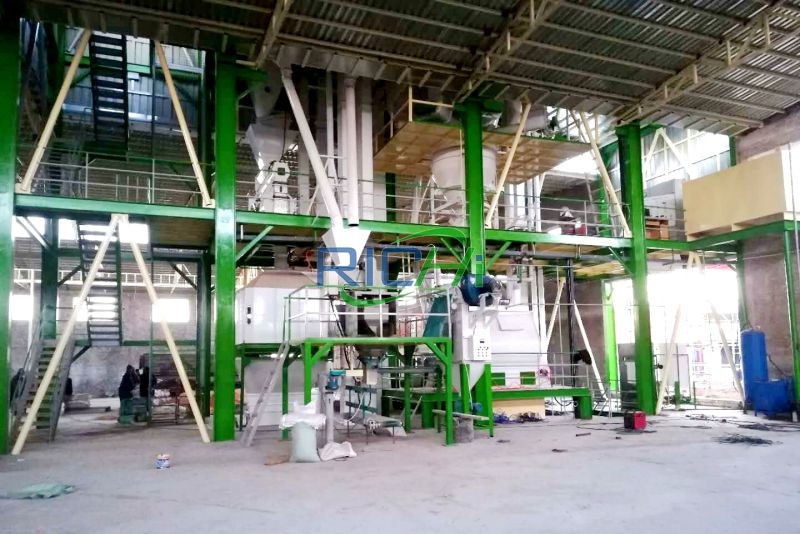
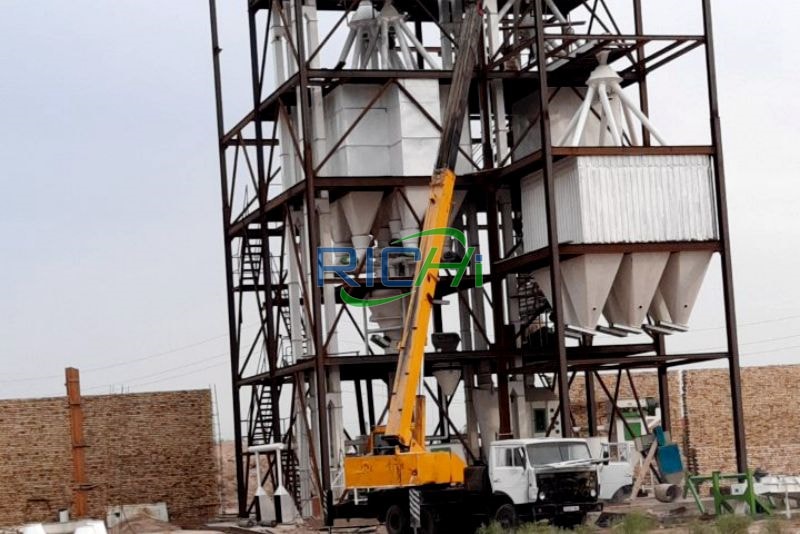


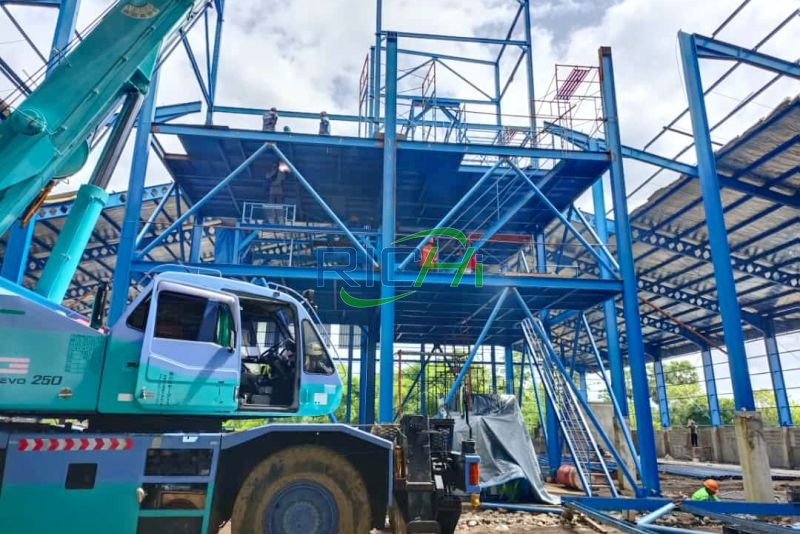
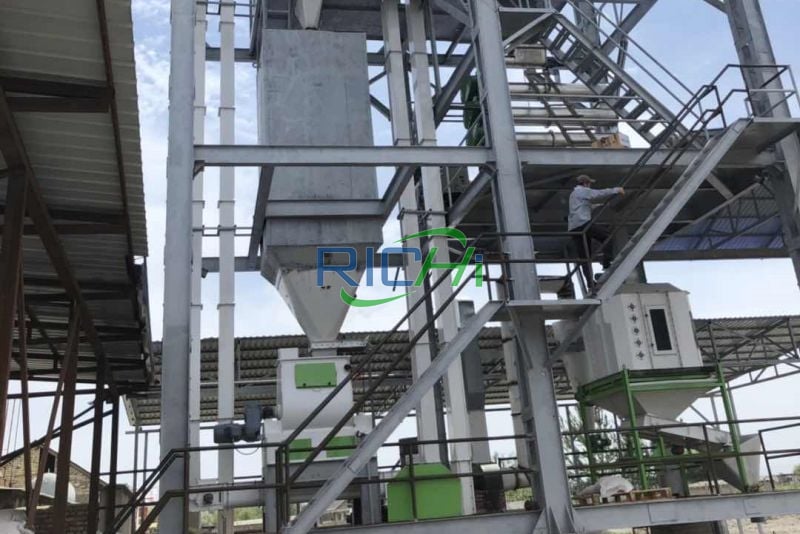
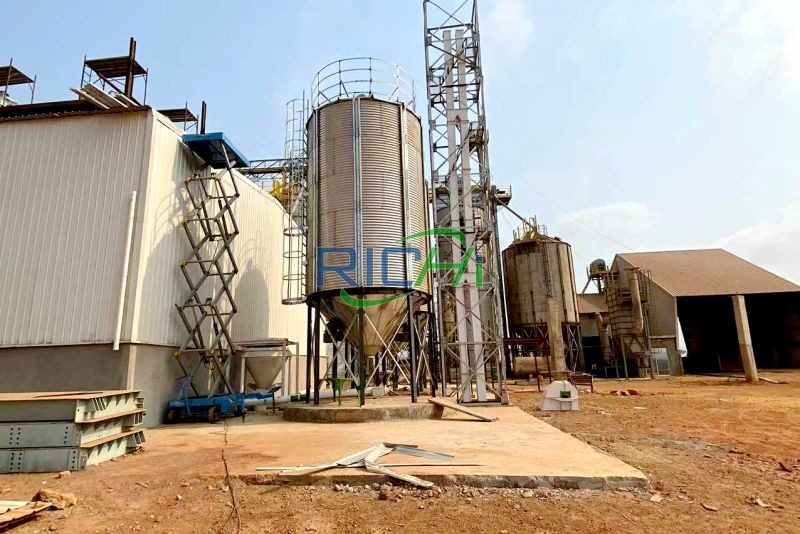
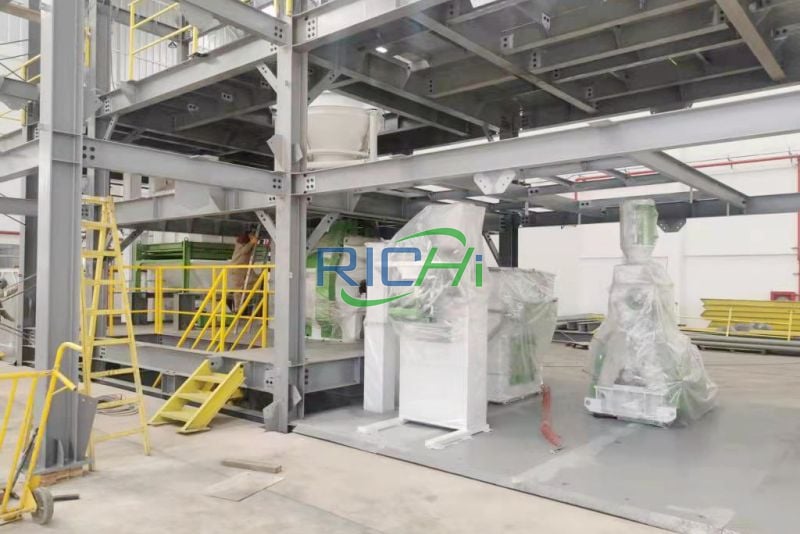
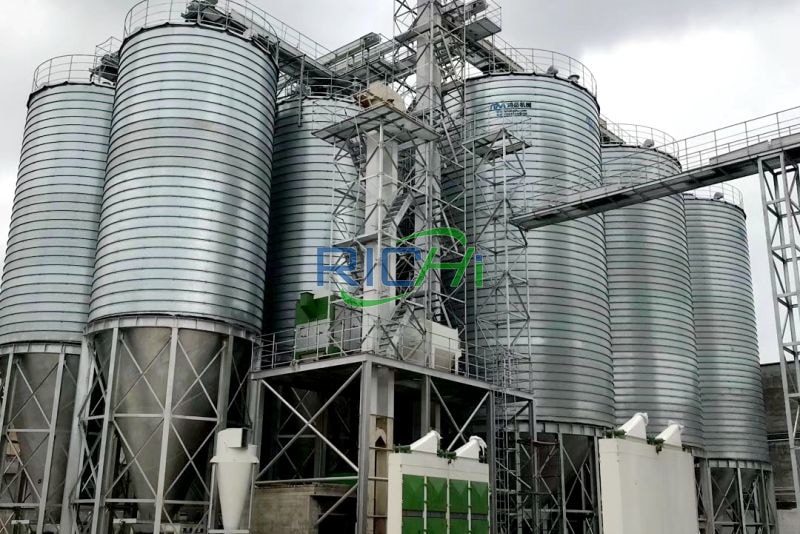
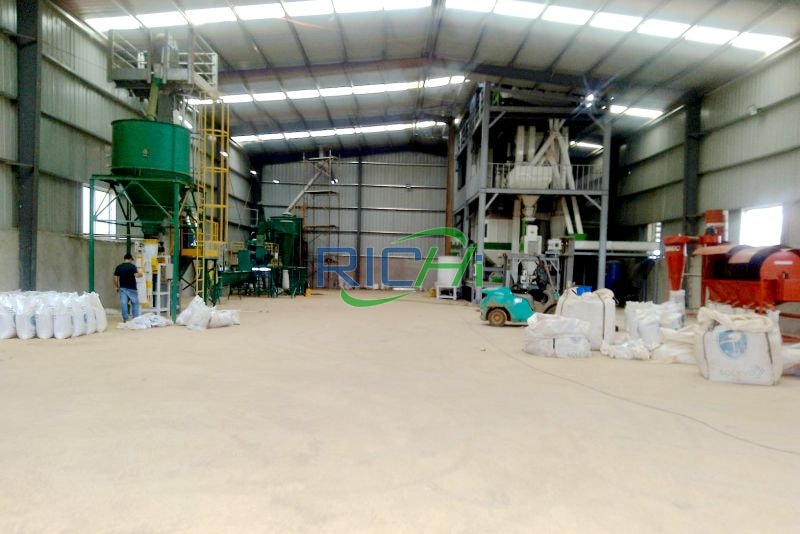
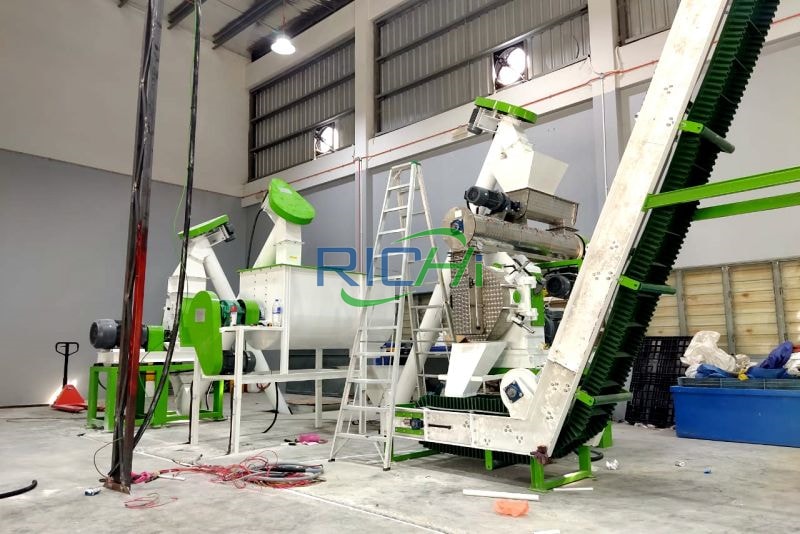
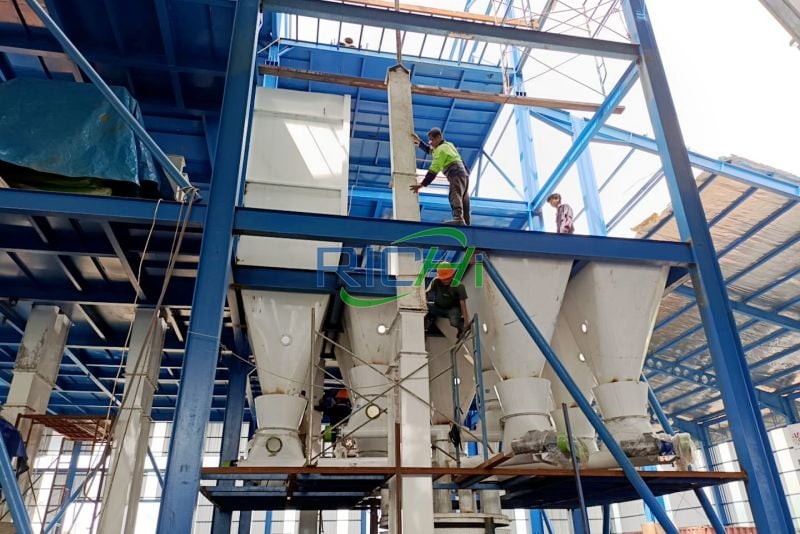
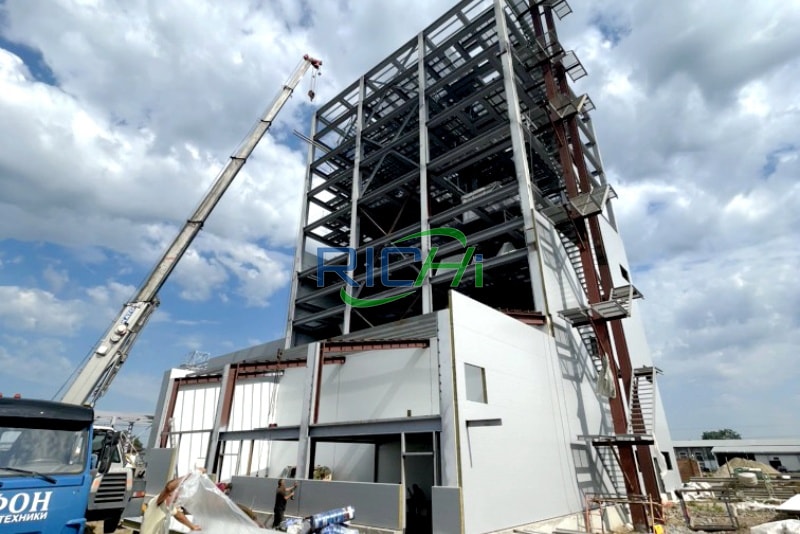
Feed free to contact RICHI Machinery for chicken feed making machine quoation and chicken feed processing plant solutions!
In the field of breeding and chicken feed production, pellet machine is an important processing equipment, and its selection directly affects the quality and production efficiency of feed. The following will elaborate on how to choose a suitable chicken feed pellet machine to help you obtain better results in the chicken feed production process.
01
Clarify production needs
Before choosing a chicken feed pellet making machine, you first need to clarify your production needs. For example, what feed ingredients do you need to process? What type of feed is produced? What are the production requirements? Only by clarifying these needs can we better choose a suitable pellet machine.
02
Understand the types of chicken pellet machines
Chicken pellet mills are mainly divided into two types: flat die pellet mills and ring die pellet mills. Flat die pellet machines usually process an output of less than 1t/h, are suitable for farmers, and have a simple structure. The ring die pellet machine is suitable for chicken feed mills and applications with higher output requirements. It is widely used and can press all kinds of feed pellets.
03
Compare pellet machines from different manufacturers and models
After clarifying the needs and understanding the types, it is necessary to compare pellet machines of different manufacturers and models. The comparison includes: equipment quality, price, energy consumption, granulation efficiency, service life and after-sales service, etc. At the same time, factors such as the adaptability of the equipment to feed ingredients and the ease of maintenance of the equipment also need to be considered.
04
On-site inspection and testing machine
In order to have a more comprehensive understanding of the performance and effect of the chicken feed making machine, it is recommended to conduct an on-site inspection at the manufacturer and actually operate the test machine. Through on-site inspection and test machine, we can intuitively understand the operating status, granulation effect and operation convenience of the equipment, so as to better judge the quality of the equipment.
05
Pay attention to after-sales service
When choosing a chicken feed pellet machine, after-sales service is also a very important part. High-quality after-sales service can ensure the long-term stable operation of the equipment and solve problems that arise during use in a timely manner. Therefore, when choosing a pellet machine, you need to understand the manufacturer's after-sales service content and policies, and try to choose a manufacturer with a good reputation and after-sales service.
06
Consider environmental protection and safety factors
When choosing a chicken feed pellet machine, you also need to consider environmental protection and safety factors. We should try our best to choose equipment with low noise, low energy consumption and low pollution, and at the same time ensure the safety performance of the equipment, such as explosion-proof and leakage-proof. This not only improves production efficiency, but also helps protect the environment and employee safety.
To sum up, choosing a suitable chicken feed making machine needs to consider many factors, including production needs, equipment type, performance comparison, after-sales service, and environmental protection and safety. Only by comprehensively considering these factors can you choose a high-quality pellet machine that suits your production needs, thereby improving feed production efficiency and quality.
Development prospects of chicken feed making machines As people's attention to animal husbandry continues to increase, the demand for poultry breeding is also increasing, and the market demand for feed pellet machines is also growing year by year. In the future, the application prospects of feed pellet machines in animal husbandry are very broad, which are reflected in the following aspects: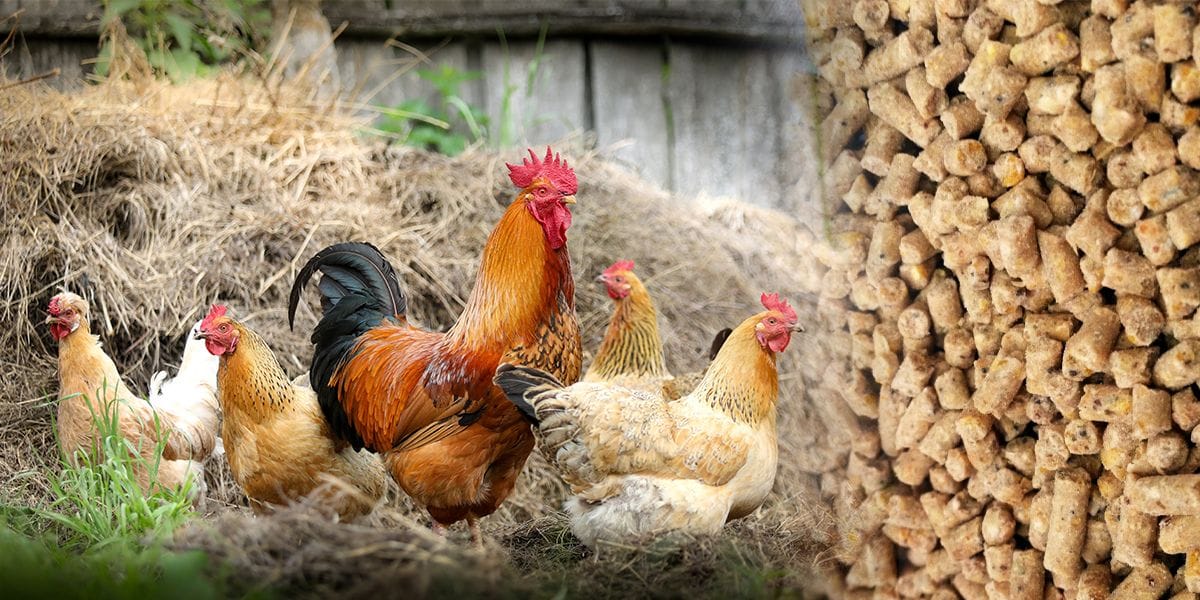
In short, with the development of the poultry breeding industry and the continuous improvement of market demand, the application prospects of feed pellet machines will become increasingly broad. In the future, feed pellet machines will develop in a more intelligent, efficient, and environmentally friendly direction, making greater contributions to the development of the poultry breeding industry.
According to the classification of chicken breeds, chicken feed can be divided into two types: layer feed and broiler feed. By combining moisture, heat and pressure on feed ingredients, a degree of gelatinization is produced which allows chickens to better utilize the nutrients in these ingredients. Feed conversion will be improved. But these advantages are particularly noticeable in the broiler industry.
Powdered feed refers to the powdered feed obtained by grinding all the feeds in the ration into powder, and then adding vitamins and trace element additives. Its advantages are complete nutrition, chickens are not easy to picky eaters, but poor palatability, and easy to fly and lose, causing waste. Therefore, the powder used for feeding laying hens should not be ground too fine.
Pellet feed is the use of a chicken feed pellet making machine to make pellets with a diameter of 2.5 to 5.0 mm. Its advantages are complete nutrition, good palatability, chickens cannot be picky eaters, can avoid partial eclipse, prevent waste, facilitate mechanized feeding, and save labor.
It is easy to cause over-fat laying hens and affect egg production. Therefore, laying hens are generally not suitable for feeding pellets. However, in the summer high temperature season, when the layer hens lose their appetite, pellet feed can be used to increase the chicken's feed intake.
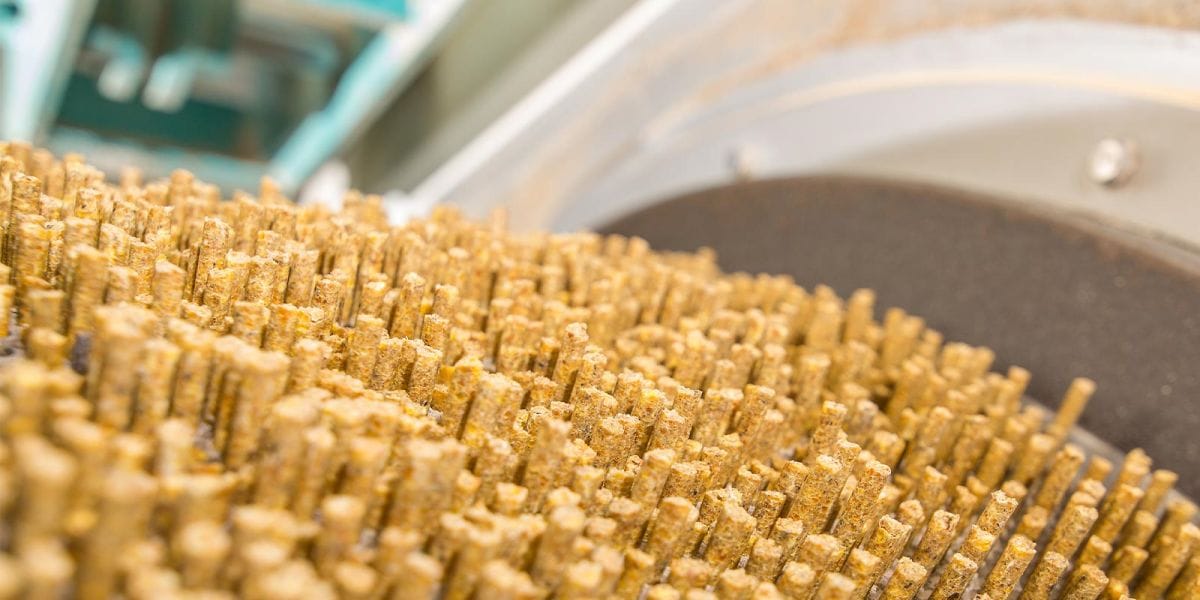
At present, it is still common for layer producers to feed powder. There are usually two ways of feeding powder for laying hens: one is to feed dry powder with buckets, troughs or feeders, so that the chickens can eat freely, so that the chickens can eat the feed at any time. The nutrient gap is small and labor is saved; the other is to feed the wet mix, that is, feed the chickens with water several times a day.
The advantage is that the palatability is good, the laying hens like to eat, and the feed intake is large, but weak Chickens often do not eat enough nutrients, causing the gap between strength and weakness to increase, and increasing the number of chickens to be eliminated. Therefore, it is better to feed the laying hens in combination with dry powder and free drinking water.
In addition, there are also customers in many regions who insist on using pelleted feed to feed laying hens. Due to the particularity of the feeding method, there are also many feeding effects.
The crushing of feed raw materials is a very important part of feed processing. Through crushing, the total surface area of raw material particles per unit mass can be increased, the solubility of feed nutrients in animal digestive juices can be increased, and the digestibility of animals can be improved.
As the main equipment of the chicken feed industry, the feed hammer mill grinder is an important factor in the formation of feed quality, feed remuneration, and feed processing cost. Therefore, properly mastering the crushing technology and selecting the appropriate crusher are issues that cannot be ignored in chicken feed production.
The particle size standard for growing chickens, laying hens and broiler chickens is 0-6 weeks old all pass through a 2.5 mm sieve, 1.5 mm sieve are not more than 15%; 7 to 20 weeks old all pass through a hole diameter of 3.5 mm sieve, 2.5mm sieve, no more than 15.0%; 0~4 weeks old broilers all pass through 2.5mm sieve, 1.5mm sieve no more than 15.0%; 4 weeks old broilers above pass through a sieve with a diameter of 3.5 mm, and the content on the sieve with a hole diameter of 2.5 mm is not more than 15.0%.
The situation of each country is different. For example, the United States commonly uses 4mm aperture sieves, but the difference is not big. Please contact Richi Machinery directly for specific situations.
Regarding the selection of the chicken feed pellet machine, it is relatively simple for customers who have experience in chicken feed production lines or chicken feed factories. You can directly refer to the output of the chicken feed pellet making machine.
Such as 1-2t/h chicken feed production line, SZLH250 chicken feed pelletizer is applicable; 10t/h chicken feed pellet production line, SZLH420 chicken feed pellet maker is applicable; for 30t/h chicken feed factory, according to the customer's actual site, the chicken feed process flow to determine the model and quantity of the chicken feed granulator. For specific configuration, please consult Richi Machinery directly.
In addition to chicken feed plant customers, for chicekn farm customers, purchasing chicken feed pellet mills requires some calculations, because many of these customers use processed pellets for their own farms, and some customers will also sell part of the self-processed chicken feed.
In this case, the customer will build a small chicken feed production line or only configure a pellet machine for chicken feed, then the following is the information "select a pelletizer for chicken feed based on the chicken's daily food intake" provided by RICHI.
The compound feed that each chicken eats a day is called the ration. The diet of chickens is based on the types and quantities of various nutrients stipulated by the feeding standards, and the different types, varieties, physiological conditions and production levels of chickens, and appropriate feeds are selected.
If the type, quantity and mutual ratio of various nutrients in the diet meet the nutritional needs of chickens, it is called a balanced diet or a complete diet. In production practice, very few chickens are fed individually (generally only under experimental conditions), and most of them are raised in groups.
In the process of raising chickens, the principle of determining the daily feed for each chicken is that it can maintain the normal metabolism of the chicken body, meet the needs of growth and egg production, and prevent the chicken from overeating, resulting in over-fat and wasted feed. Specific determination of daily feed dosage should consider chicken breed, strain, age, weight, egg production, environmental temperature and other conditions, etc.
Generally, medium-heavy layer chickens need 100-120 grams of compound feed per day; local breed broiler breeders need 130-150 grams of compound feed per day; 140-160 grams of large-sized imported broiler breeders; the daily feed amount of chicks, broilers and broilers depends on age and growth rate.
With the development of animal husbandry, chicken feed making machine is used more and more widely. However, due to the high work intensity of the chicken feed pellet production line and the serious wear and tear of the equipment, regular maintenance is particularly important. Here we will introduce you how to maintain chicken feed equipment to ensure its normal operation and extend its service life.
01
Daily inspection of equipment
02
Regular maintenance of equipment
03
Lubrication and maintenance of equipment
04
Electrical maintenance of equipment
In short, the maintenance of chicken feed making machines is crucial. Only by doing daily inspections, regular maintenance, lubrication and electrical maintenance of the equipment can we ensure the safe and stable operation of the equipment and improve production efficiency.


Introduction of RICHI
Strength certification
Richi Machinery is a professional manufacturing enterprise integrating scientific research and development, manufacturing, sales and service. We have developed and manufactured multifunctional pelletizers, grinders, mixers, dryers and more than ten categories and more than 30 models of complete machine products are widely used in feed, biomass, organic fertilizer, pet supplies, solid waste recycling, chemical industry, road construction and other fields.
All RICHI products have passed ISO9001:2008 international quality system certification, EU CE certification and Customs Union CU-TR certification, successfully serving more than 2,000 customers in more than 100 countries and regions around the world.
In RICHI, every equipment and every pellet production line business plant can be customized. We will formulate multiple sets of pellet production process plans for comparative analysis according to the actual needs of customers, select a reasonable plan, and realize private customization.
Our services run through all aspects of on-site terrain and environment survey, production line process design, raw material testing, cost requirement analysis, project investment budget, equipment installation and commissioning.




Quality Control
Richi Machinery
We adhere to the ISO9001 quality management system, and strictly implement international standards for product design and manufacturing processes. In terms of management systems, there are product quality accountability systems, product quality accountability systems, and safety production management systems; in terms of management tools, QC quality control management, SPC statistical process control, sampling inspection and measurement system analysis are used for quality control, to achieve effective control of the entire process of equipment production, and never let go of any quality hidden dangers that may affect customer operations.

RICHI has always been adhering to the spirit of craftsmanship to make every detail good, especially in the link of equipment preparation and delivery, we follow the standardized process: preparation order check-equipment factory quality inspection-packing list re-inspection-scientific packaging and transportation, ensure the safe and non-destructive delivery of equipment.
According to customer needs, RICHI installation engineers will guide the construction of site infrastructure, equipment installation and commissioning and trial operation of the entire production line throughout the process. When the relevant project indicators reach the design standards, the client will carry out the project acceptance.









After-sales And Training
Richi Machinery
We have built a team of nearly 100 technical engineers to solve a series of problems in the project from consultation, site survey, sample analysis to plan design, installation and commissioning, and maintenance. We provide comprehensive and systematic training for the technical staff of each customer to better serve the customer's project needs.
After the technicians have finished their studies, RICHI will provide follow-up technical support services, and the training engineers will follow up the project use effects in the later stage to ensure the stable operation of the customer's project.